Various yoga poses have various benefits. The history of yoga is indeed very old. It was originated in India. The first book of yoga was written by Patanjali in 147 B.C. In fact, yoga means joining of body with soul. Yoga poses are for everyone: kids, youngsters and adults. Doing yoga poses daily can help a person live life healthy and long. Yoga poses improves the immunity, flexibility and strength of a person. Yoga poses also improve emotional health of a person.
Benefits of yoga poses
- Improves immunity: It improves immunity of the body. Regular practice of yoga can make immunity system of a person stronger. It helps in improving body capacity of fighting with diseases and let a person live healthy life.
- Increases flexibility of body: Regular practice of yoga can make your body flexible. Stiff body is not good body. More flexibility you have, more good is the flow of blood in your body. Yoga makes body muscles flexible.
- Increases Strength: It also increase strength of the body. Bones and muscles become strong. With strong bones and muscles a person can do more work and in better way than others. Yoga increases the core strength of the body.
- Improves mental health of a person:Yoga has very good impact on the mental health of a person. It improves the mood of the person, provides peace, relaxation and makes a person feel stress free.
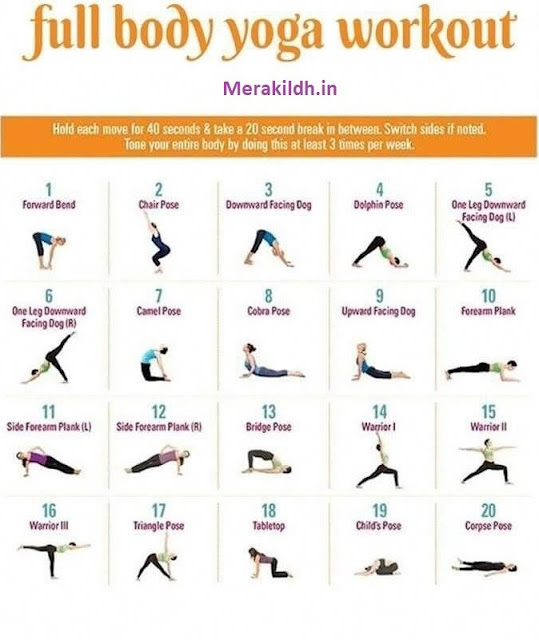
- Yoga poses should be practiced in the morning. It is better to do yoga after taking bath.
- Yoga poses should be performed at peaceful and airy place.
- Yoga poses yields more results when done with full concentration.
- The practice of Asana should be increased gradually. It opens up the body and gives elasticity.
- We should be dressed scantily while performing yoga but during winters proper clothes should be worn.
- It can be performed by a person of any age. But prior to start practice, guidance should be taken from trained professional.
- These exercises should be performed with empty stomach. The meal should be taken after at least 2 hours of yoga Aasan.
- Pranayam should not be performed by a sick person.
- Shav Aasan must be performed after completing the yoga. Aasans benefit only when followed by shava Aasana.
- Forward bend is good for mental health as it calms your brain.
- It acts as stress buster by relieving stress.
- It is great for person suffering from mild depression.
- This yoga pose also strengthen the thighs and knees.
- It is also good for digestive system as this yoga pose improves digestion and reduce anxiety.
- Chair pose
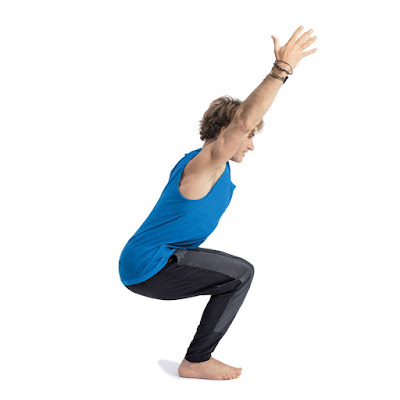
Procedure: Firstly, Stand in Mountain pose(Tadasana). Inhale your breath and raise your arms perpendicular to the floor then Exhale and bend your knees, try to take the thighs nearly parallel to the floor as possible. Firm your shoulder against the back. Stay for 30 seconds to one minute.Benefits of Chair pose:
- It strengthens the muscles of thighs and ankles.
- Also stretches the shoulders.
- It stretches the chest muscles also.
- Downward facing dog:
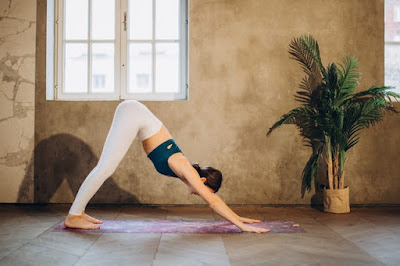
Procedure: Firstly set your knees directly below your hips and your hands slightly forward to your shoulders. Spread your palms, index fingers parallel or slightly turned out, and turn your toes under. Exhale your breath and lift your knees away from the floor.Benefits of Downward facing dog:
- Calms the brain.
- Helps to relieve stress and mild depression.
- Energizes the body.
- Stretches the shoulders, hamstrings, calves, arches, and hands.
- Strengthens the arms and legs.
- Dolphin pose:
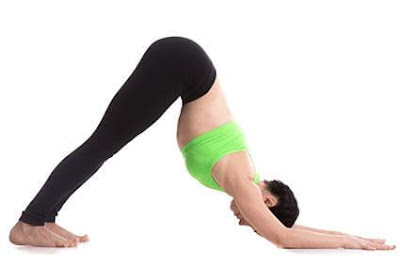
Procedure: Begin with your hands and knees and then lower your elbows to the floor directly down your shoulders. Tuck your toes and lift your knees off to the floor. Then, gently begin to straighten your legs. Draw your shoulder blades into your upper back ribs and toward your tailbone.Benefits of Dolphin pose:
- Dolphin pose strengthen the thigh and ankle muscles.
- It stretches the shoulders.
- It stretches the chest.
- One leg downward facing dog (L):
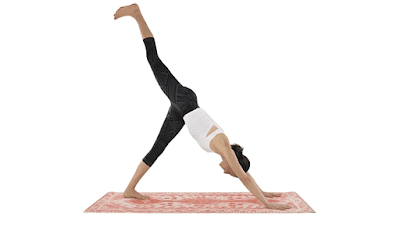
Procedure: Firstly set your knees directly below your hips and your hands slightly forward to your shoulders. Spread your palms, index fingers parallel or slightly turned out, and turn your toes under. Exhale your breath and lift your left knees away from the floor and right knee should be on the floor.Benefits of One leg downward facing dog:
- Calms the brain.
- Helps to relieve stress and mild depression.
- Energizes the body.
- Stretches the shoulders, hamstrings, calves, arches, and hands.
- Strengthens the arms and legs.
- One leg downward facing dog (R):

Procedure: Firstly set your knees directly below your hips and your hands slightly forward to your shoulders. Spread your palms, index fingers parallel or slightly turned out, and turn your toes under. Exhale your breath and lift your right knees away from the floor and left knee should be on the floor.Benefits of One leg downward facing dog:
- Calms the brain.
- Helps to relieve stress and mild depression.
- Energizes the body.
- Stretches the shoulders, hamstrings, calves, arches, and hands.
- Strengthens the arms and legs.
- Camel pose:
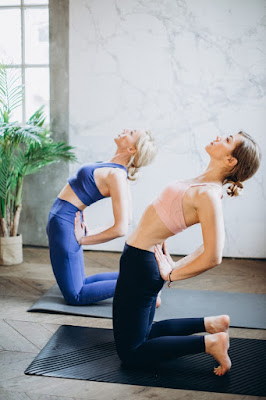
Procedure: Stand on the knees and keep them together. Try to lean your upper body in the backward direction. Push your hips in the forward direction. Then bend the head and the spine backward and as far as possible without straining and then relax your body and muscles of the back.Benefits of Camel pose:
- Camel pose improves the spinal flexibility.
- This pose improves the body posture and also strengthen muscles of back.
- It helps to create space in the chest and lungs and also increases breathing capacity.
- It stimulates the kidneys.
- Cobra pose:

Procedure: Lie on the floor and Press the tops of the feet and thighs and the pubis firmly into the floor, On an inhalation, take your arms straight to lift your chest up from the floor, only to the height at which you can maintain a connection through your pubis to your legs.Benefits of Cobra pose:
- Stretches the muscles of shoulders, and chest.
- Decreases stiffness of lower back.
- Strengthens the arms and shoulders.
- Increases flexibility.
- Invigorates the heart.
- Upward facing dog:

Procedure: Lie on the floor and Press the tops of the feet and thighs and the pubis firmly into the floor, On an inhalation, take your arms straight to lift your chest up from the floor, only to the height at which you can maintain a connection through your pubis to your legs.Benefits of Upward facing dog:
- Stretches the muscles of shoulders, and chest.
- Decreases stiffness of lower back.
- Strengthens the arms and shoulders.
- Increases flexibility.
- Invigorates the heart.
- Forearm plank:
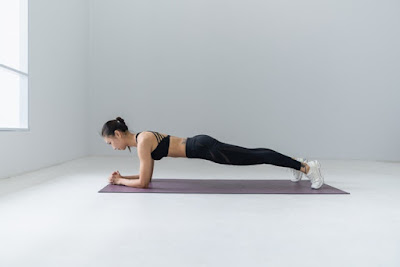
Procedure: First come up in the pushup position but bend your arms at your elbows so the weight comes on your forearm and try to tighten your abs and straighten your body. hold your body as long as you can.Benefits of Forearm plank:
- Stretches the abs, legs, and core.
- It is good for stretching the arches of your feet.
- Provide Strengthens the legs and shoulders.
- Increases flexibility.
- Invigorates the heart.
- Side forearm plank(L):
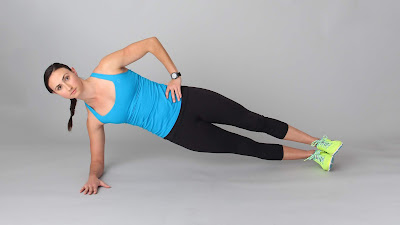
Procedure: Start on your left side of the body, bend your left arm at your elbow and take up your hips and body straight from head to feet. Hold your position without letting your hips down.Benefits of Side forearm plank:
- It helps to tone your hips, core and entire body.
- It is good for stretching the arches of your feet.
- Provides Strength to the muscles of your lower back.
- Increases flexibility.
- It reduces the lower back pain.
- Side forearm plank(R):

Procedure: Start on your right side of the body, bend your right arm at your elbow and take up your hips and body straight from head to feet. Hold your position without letting your hips down.Benefits of Side forearm plank:
- Right side forearm plank helps to tone your hips, core and entire body.
- This pose is also good for stretching the arches of your feet.
- Increases flexibility.
- It reduces the lower back pain.
- Bridge Pose:
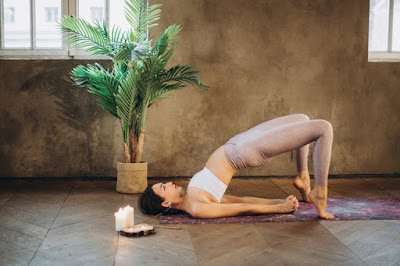
Procedure: Lie on the floor on your back and keep your knees bent. Extend your arms along the floor and keep them flat. Press your feet and arms firmly into the floor. Exhale your breath as you lift your hips toward the ceiling.Benefits of Bridge Pose:
- Stretches chest, neck, spine.
- Strengthens the back, buttocks, and hamstrings.
- Stretches hips.
- Improves circulation of blood.
- Warrior |:
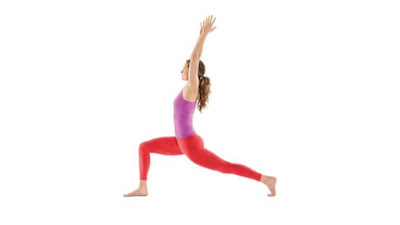
Procedure: First stand straight up with your feet hip-distance apart and your arms at your sides. Exhale your breath and take a feet wide apart, about 4-5 feet.Turn your right foot out 90 degrees, so your toes are pointing to the top of the mat and pivot your left foot inwards at a 45-degree.Benefits of Warrior |:
- Warrior I strengthens the muscles of legs and opens the hips.
- This also stretches the muscles of chest, arms and legs.
- It helps to energizes the entire body.
- It Improves blood circulation in body.
- Warrior ||:

Procedure: First stand straight up with your feet, Turn the right foot slightly to the right and left foot out to the left 90 degrees. Exhale your breath and bend your left knee over the left ankle, so that the shin is perpendicular to the floor. Stretch the arms parallel to the floor.Benefits of Warrior ||:
- Warrior II strengthens the legs, arms and opens the hips.
- It also stretches chest, arms and legs.
- This pose also energizes the body.
- It Improves circulation of blood in the body.
- Warrior |||:
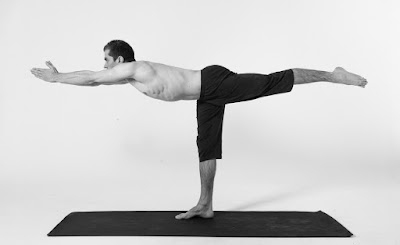
Procedure: Take a deep inhalation and step your legs 4 feet apart. With the release of your breath turn the right foot 90 degrees to the right and the left foot should be at 45-60 degrees to the right. Bend your right knee till the thigh becomes parallel to the floor and perpendicular to the shin.Benefits of Warrior |||:
- Warrior III strengthens the whole back side muscles of the body.
- This also helps to strengthen the abdominal muscles.
- It energizes the whole body.
- It Improves the balance and body posture.
- Triangle pose:
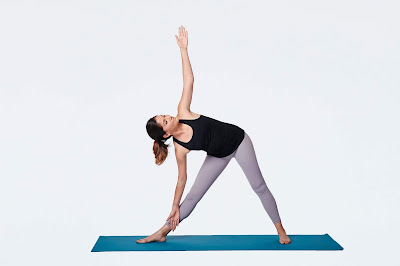
Procedure: Stand straight, Extend your arms at your shoulder level, Inhale breath and raise your right arm by the side of your head. then, bend your right arms with exhaling towards the left side by keeping your bodyweight equally on both of the feet.Benefits of Triangle pose:
- Stretches legs, muscles around the knee, ankle joints, hips, groin muscles, hamstrings, calves, shoulders, chest and spine.
- Strengthens the legs, the knees, the ankles, the abdominals, the obliques and the back.
- Improve the function of abdominal organs.
- Helps to relieve stress and mild depression.
- Tabletop:

Procedure: Come to the floor on your hands and knees and straighten your back. Look down between the palms and allow the back to be flat. Press into the palms to drop the shoulders slightly away from the ears.Benefits of Tabletop:
- Stretches chest, neck, spine.
- Strengthens the back, buttocks, and hamstrings.
- Stretches hips.
- Improves circulation of blood.
- Child’s pose:
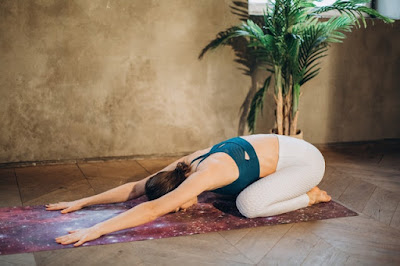
Procedure: Position your hands and knees on the mat and move your hip back to the feet and wait for some time and then come to the same position.Benefits of Child’s pose:
- Helps to relieve pain.
- Improve flexibility.
- Improve neck, spine and shoulders.
- Corpse pose:
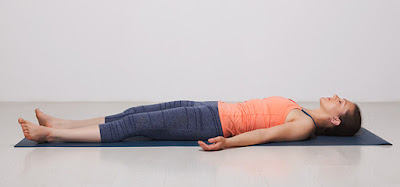
Procedure: Lie in a comfortable position on the mat and then take breath slowly from your nose and then exhale your breath from the mouth slowly. The release breath should be double than the intake breath.Benefits of Corpse pose:
- It helps to calm the brain and help to relieve stress and mild depression.
- It helps to relax the body.
- It helps to Reduce headache.
- It helps to lower blood pressure.
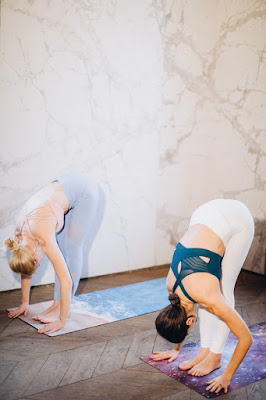
Procedure:First stand with your feet joined. Place your hands next to your feet, Inhale breath and extend your chest to lengthen your spine. Exhale your breath and gently press both legs toward straight. On the release of breath, extend your torso down without rounding your back.
Benefits of Forward bend:
Tags exercises health home exercises yoga
